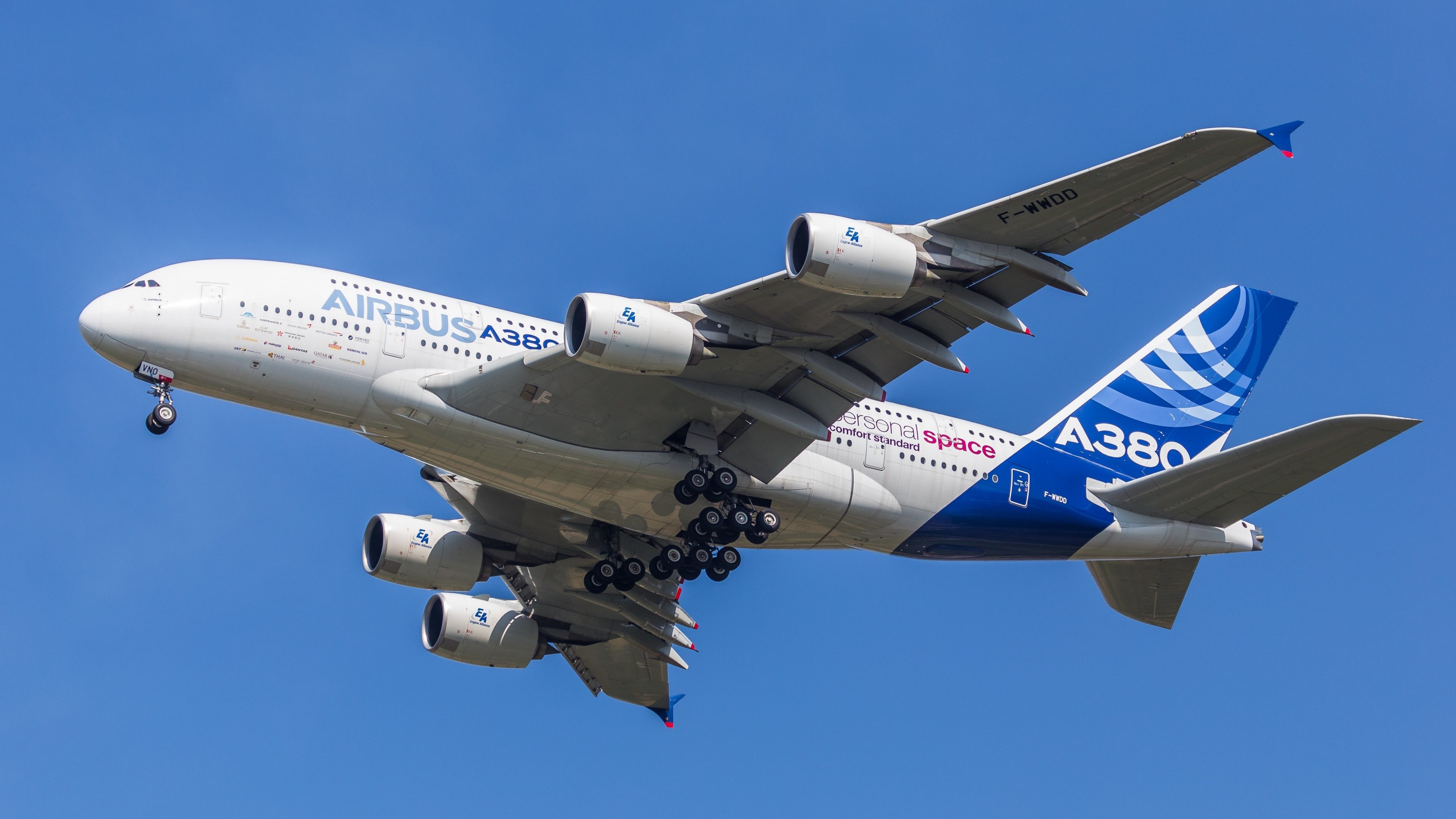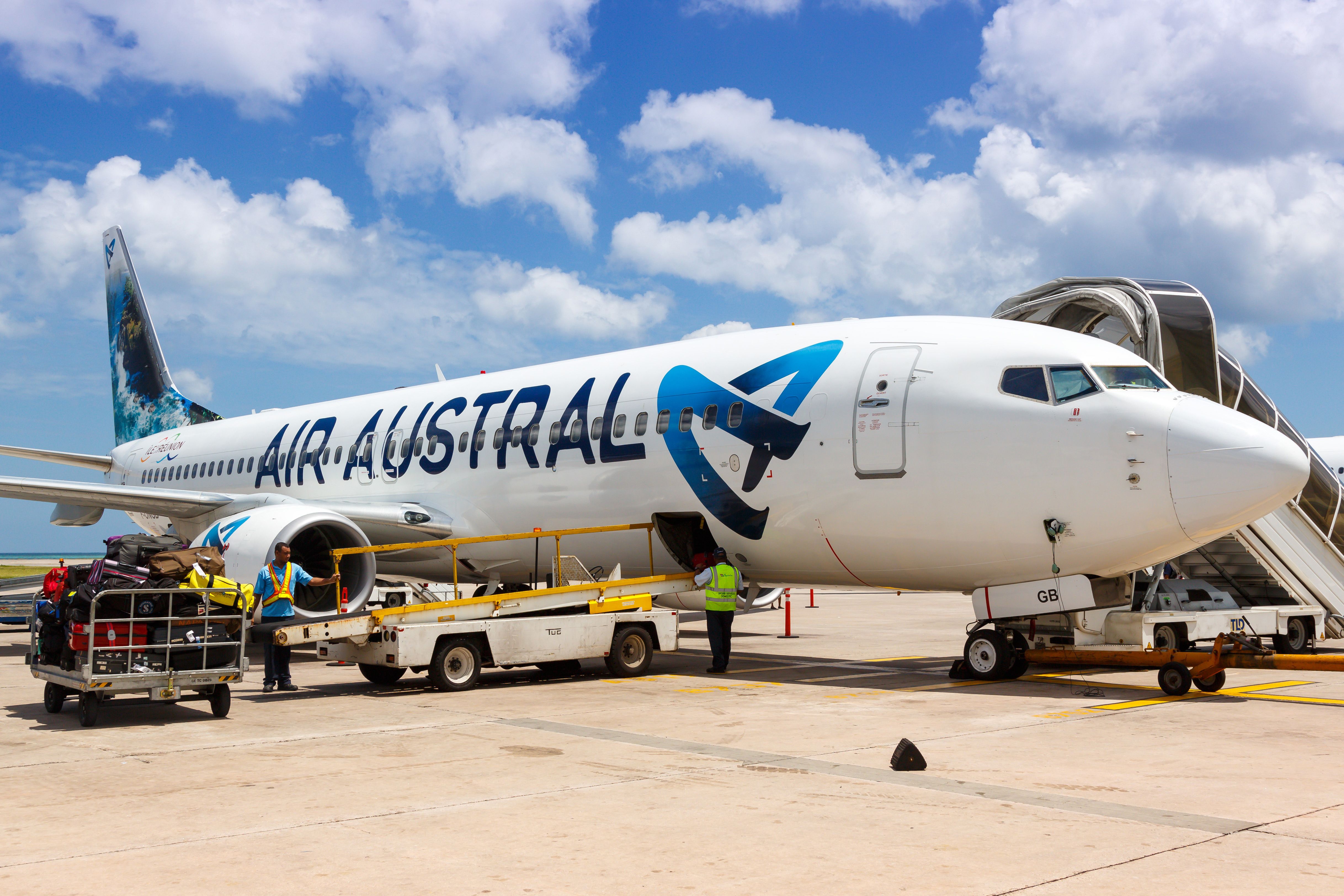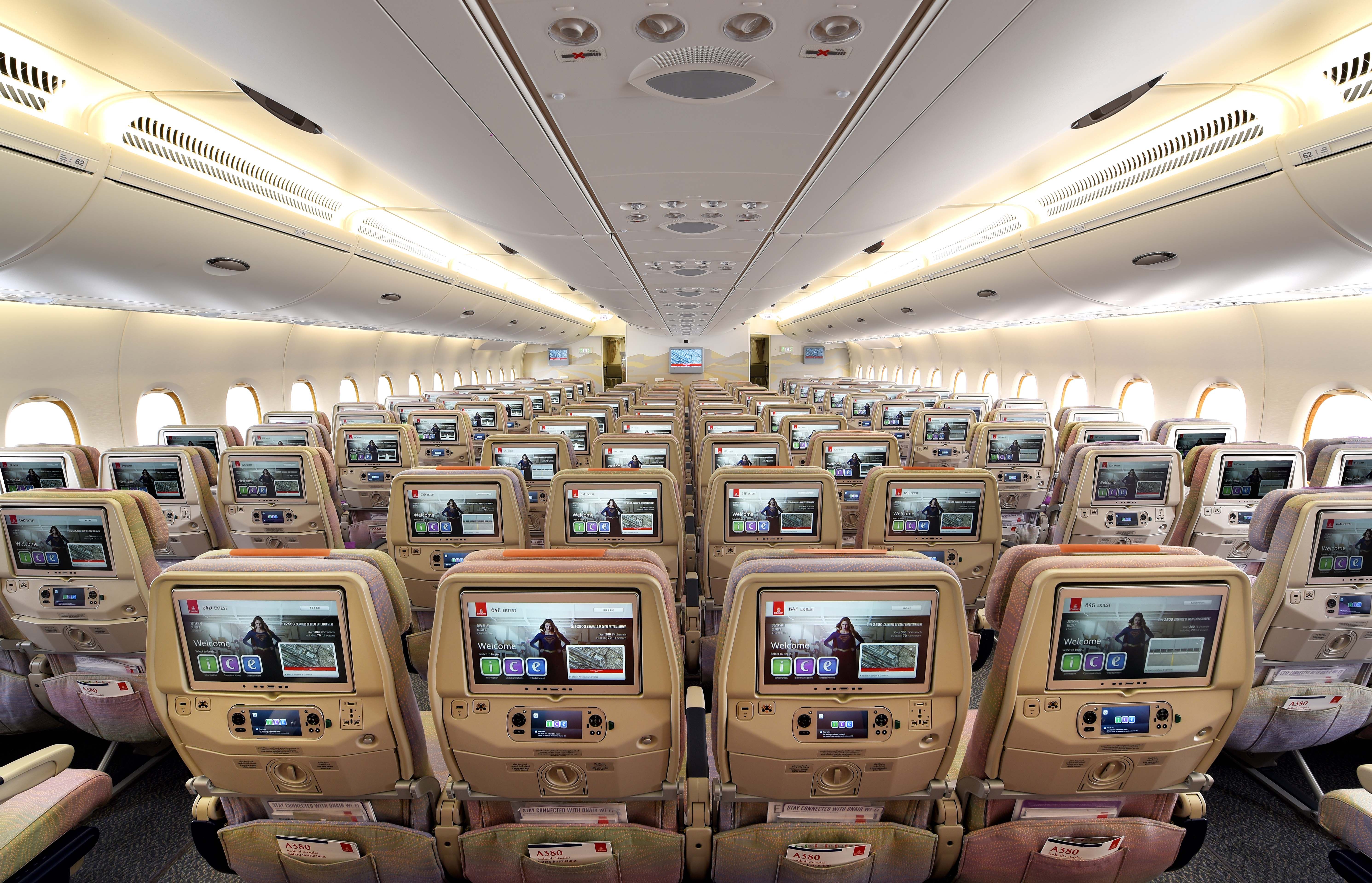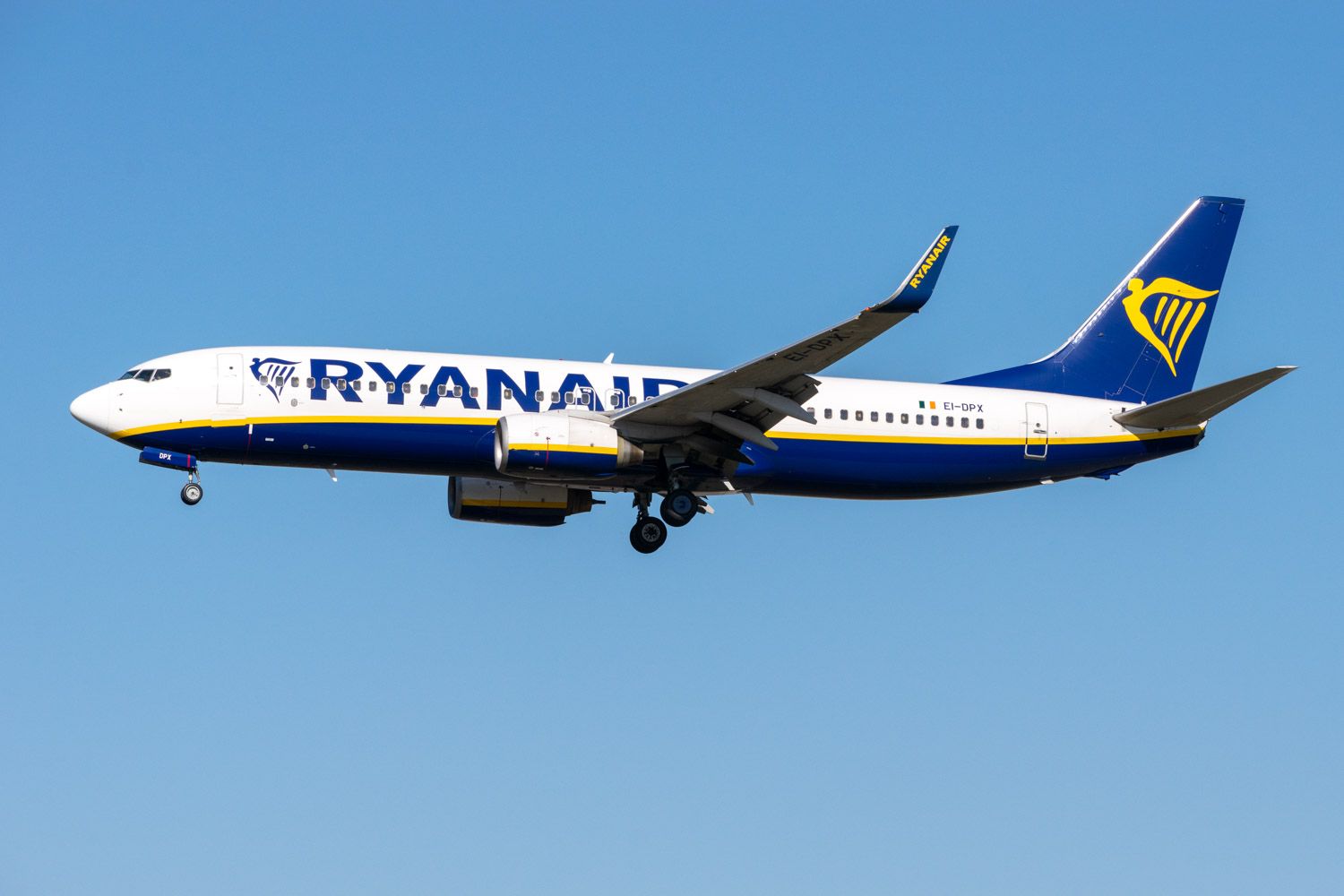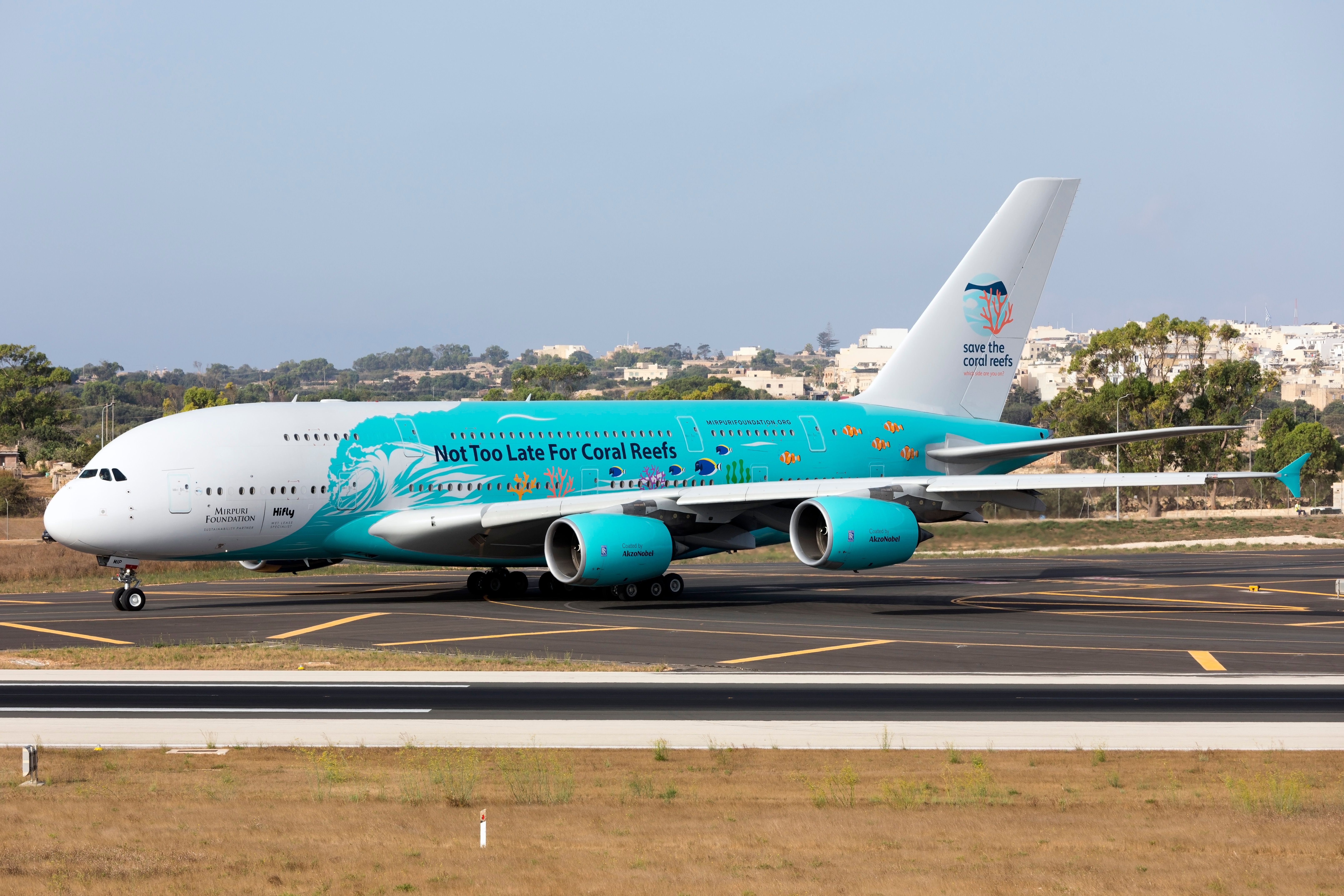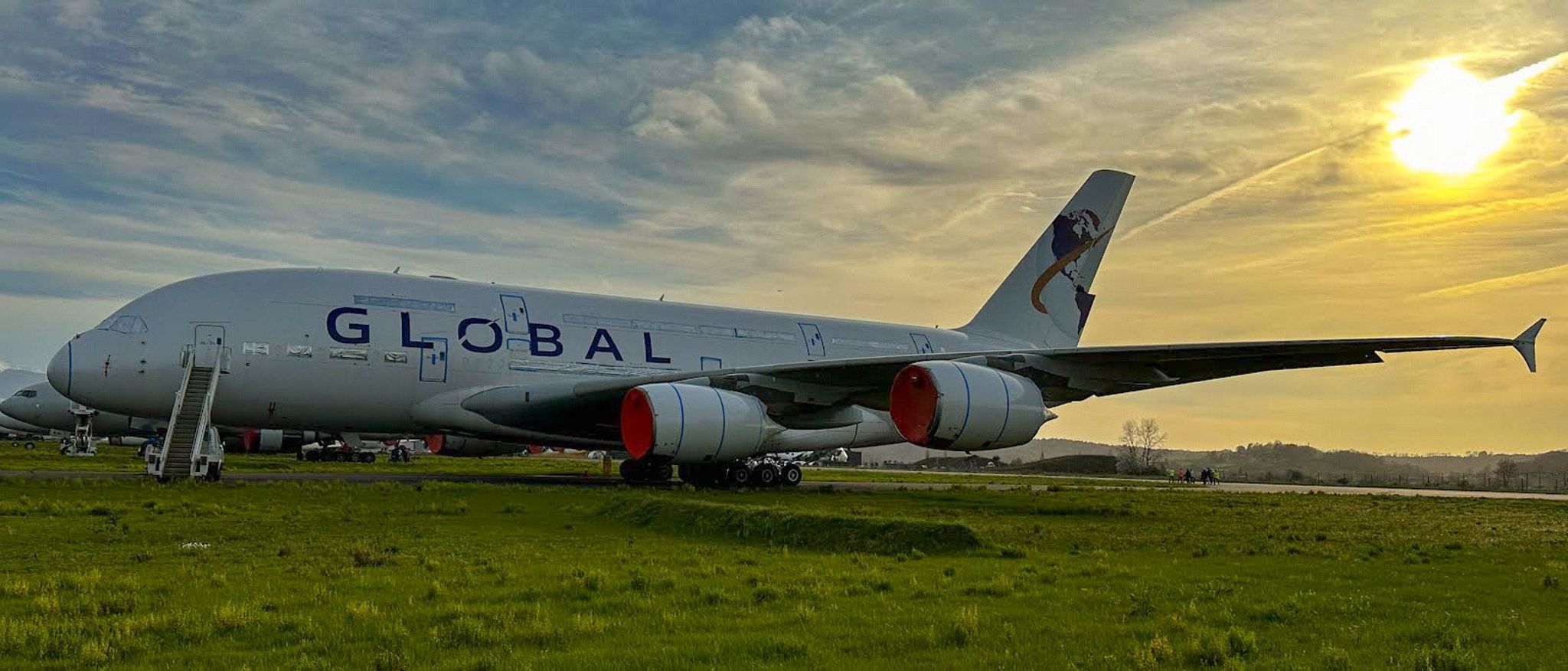Summary
- Air Austral's plans to operate a low-cost A380 with 840 seats in an all-economy configuration were canceled, highlighting the challenge of finding routes that can accommodate such a large aircraft.
- The business model of operating a low-cost A380 would involve oversupplying economy seats to reduce per-passenger costs, but airlines often make more money from premium offerings.
- The potential impact of a low-cost carrier running a fleet of A380s, like Ryanair, would include a significant increase in passenger capacity, limited airport options, and potential difficulties in filling up the aircraft. This scenario is unlikely to be economically viable.
In 2018, low-cost carrier Air Austral rented an Airbus A380 for its Paris to Reunion island route to ferry holidaymakers down the tropical paradise. The A380 was provided by the wet lease company HiFly, which is the first leasing company to have an A380 available for rent.
However, the aircraft was unfortunately hit (or got hit) by a boarding ramp and had to be grounded while it awaited repairs to become airworthy again.
Air Austral originally had two A380s on order and planned them to be an all-economy configuration. Naturally, you would not spend over $800 million on two aircraft if it was not a solid financial idea. They have since canceled, but one has to wonder what could have been.
What would a low-cost carrier A380 look like?
Had Air Austral taken delivery of its A380 double-deck aircraft, they would have outfitted the planes with 840 seats each in an all-economy configuration. This is compared to the standard configuration of around 480 seats (split over economy, premium economy, business, and first classes) found in the majority of the A380s being operated today.
We have covered in great detail what the service would be like using the example of what if Ryanair bought an A380. In terms of operation, our best two examples would be looking at Ryanair's (easyJet and Wizzair) marketplace dominance and how Emirates operates a fleet of over a hundred large-capacity aircraft.
Many low-cost carriers operate a fleet of hundreds of planes, such as the Boeing 737, which can quickly and easily fly between many smaller destinations. Emirates, on the other hand, flies primarily to big hubs on incredibly long-haul routes (Such as London to Dubai to Sydney) that have the demand for big passenger numbers that can be accommodated by widebody aircraft.
An A380 would only be viable if it flies route pairings that can handle the large aircraft and have sufficient passenger numbers to fill it up. However, many routes that the low-cost carriers fly to are smaller secondary destinations and regional airports that do not require large capacity planes, certainly not 500+ daily seats on an A380.
Would it be economical?
The overall business model of operating a low-cost A380 would be oversupplying economy seats in order to reduce the per-passenger operation cost and beat out competing carriers by setting lower prices than the competitors can afford to operate with.
We have gone into great depth and analyzed if Norwegian Airlines made any money from the duration in which the carrier operated the A380. This is very telling if this concept is even possible. Additionally, we also have mentioned that economy is usually a break-even or loss for airlines, with them making the most money from their more premium offerings.
While this analysis is based on the current seating capacity of an A380 of around 400–500 seats, consider the possibility that the aircraft had an all-economy configuration of over 800 seats.
How would it affect the rest of the airline industry?
While many articles explore in great detail what the A380 itself would be like, few discuss the ramifications on the rest of the industry. What if a low-cost carrier decided to run a fleet of A380s? How would that affect the commercial aviation landscape? For this example, consider Ryanair operating a fleet of 500+ Airbus A380s instead of the Boeing 737s.
As noted by Teodor Negru, in an assumption that all of Ryanair's aircraft were to be the A380 and the airline had the required number of flight and cabin crew to operate these aircraft, the following two things would happen:
1. The passenger capacity per aircraft would grow from around 180 passengers to over 800, which is over 400% increase in capacity. This would also mean that Ryanair, with over 500 A380s, would be the type's largest operator worldwide.
2. The airports Ryanair can serve would drastically reduce. This is because there are very few airports within Europe that can handle the enormous Airbus A380 and very few route pairings that can sustain enough passenger numbers to make the use of the A380 economically viable.
Considering the fact that the low-cost airline would be massively constrained to the number of airports it can operate to and face further difficulties in filling up its aircraft with 800+ passengers for each flight, the leading probability is that the airline would fail.
Furthermore, as the industry has learned by now, the A380 has a negligible second-hand market, thus making it hard for the airline to sell any of their aircraft as well.
Additionally, even if the airline managed to make it work, it could potentially face difficulties in securing the right priority at airports; some airports have limited facilities, such as gates capable of handling the A380. A prime example is Norwegian unable to land at JFK at the time the airline preferred due to the limited A380 gates being used by other operators of the type.
Thus, the analysis provides an overall outlook that suggests that a low-cost airline exclusively operating a fleet of A380s is bound to fail as it would not be economically viable. While an argument could be made for the airline utilizing a second type of aircraft, the balance of probability indicates that it would be unlikely as low-cost carriers (usually) tend to stick with a single aircraft type for operational simplicity and fleet commonality.
Get the latest aviation news straight to your inbox: Sign up for our newsletters today.
The future of the type
Just a few years ago, airlines (apart from Emirates) were questioning the need for the A380s within their fleet for the future at the height of the COVID-19 pandemic.
While the A380 no longer has a future with airlines such as Thai Airways, Malaysian Airlines, and China Southern, the type has made a significant come-back with carriers such as Etihad, Lufthansa, and even Qatar Airways, despite the airlines initially removing the A380s from their fleet.
Nevertheless, despite being popular with the passengers worldwide, the airlines have made it clear that the type will eventually be retired as the carriers receive more aircraft, such as the Boeing 777-9, which is set to replace the capacity offered by the Airbus A380.
Even Emirates, by far the largest operator of the type, is currently performing the world's largest fleet retrofit program by updating the cabins on its A380s (and Boeing 777s), with newer cabins confirmed that the A380s will exit the fleet by the mid-2030s. However, the carrier is pushing Airbus and Boeing to build a replacement for the high-capacity aircraft.
New operator?
While HiFly was the first airline to operate a second-hand A380, recent reports suggest that a new startup airline - Global Airlines, has agreed to purchase three more Airbus A380s and intends to operate these aircraft starting in the Spring of 2024.
The carrier plans to operate the A380 on highly popular transatlantic routes of London Heathrow (LHR) to New York (JFK) and London Heathrow (LHR) to Los Angeles International Airport (LAX).
Source: Quora.

